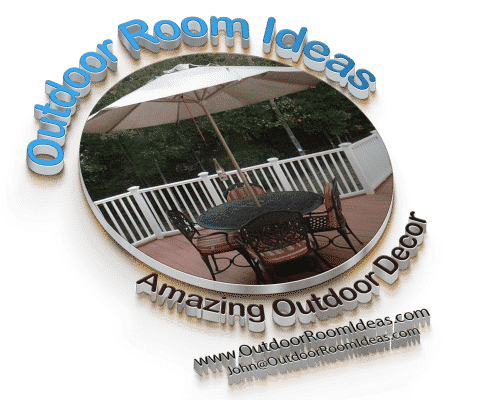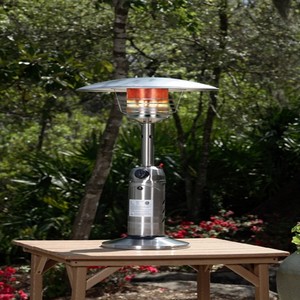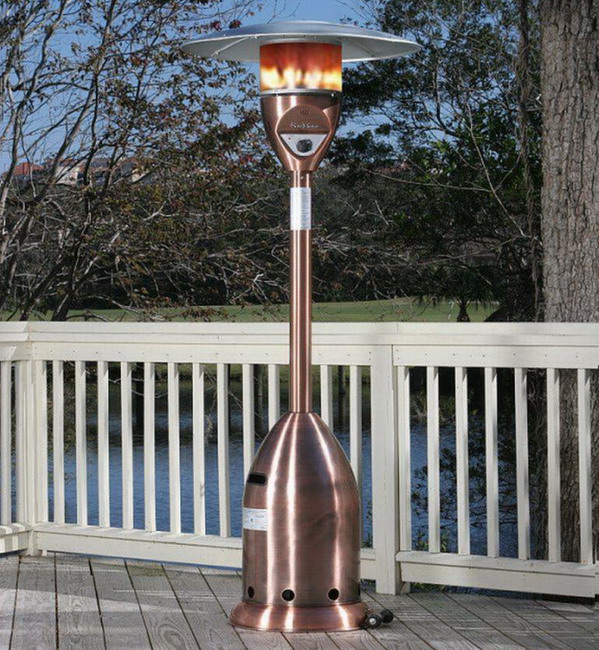Outdoor living spaces have become a real extension of our homes these days, and when the temperature starts to dip, nobody wants to cut those chill vibes short. Enter outdoor heaters, transforming patios and gardens into cozy retreats, even on the briskest of evenings.
Imagine sipping hot cocoa under a starlit sky without shivering. Outdoor heaters make that happen, offering warmth and coziness, letting you enjoy your outdoor digs all year round. Whether it's a frosty winter evening or a nippy autumn night, having a reliable source of heat means picking up where summer leave off.

Lately, these patio companions have skyrocketed in popularity. Why? They're just perfect for anyone looking to maximize their outdoor time without freezing. People are getting creative with outdoor spaces, and heaters are playing a starring role. From family gatherings to weekend get-togethers with friends, they make socializing outdoors way more inviting.
With a slew of options available, you can find something that fits your outdoor setup and heating needs. It's really about finding the right type that works for your space and style, turning your patio into an intimate escape or a party hotspot.
Exploring the Diverse Types of Outdoor Heaters
Outdoor heaters come in all shapes and sizes, and finding the right one means getting familiar with the different types available. Whether you're after something portable or a permanent fixture, each heater type offers its unique perks.
Propane heaters are a popular choice for those who need flexibility. They're easy to move around, making them perfect for shifting party spots or reconfiguring your outdoor setup. Plus, they heat up fast, giving you and your guests instant warmth.
Electric heaters bring the efficiency and safety game strong. They're particularly great for smaller spaces or permanent setups, where you don't have to worry about gas refills. Some models even come with handy features like remote controls and timers.
Natural gas heaters are perfect for bigger outdoor areas where consistent heat is key. Although they can rack up installation costs, once set up, they're cheaper to run. They're the choice for those who entertain often and need reliable warmth without interruption.
For a more intimate setting, tabletop heaters offer compact warmth. They're small but mighty, ideal for close-knit groups or a twinkling dinner night outside. These heaters fit right on your table, bringing the heat without the bulk.
Choosing the Right Heater Size and Heating Capacity
When it comes to keeping your outdoor space warm, size truly matters. Picking a heater that's too small won't cut it when the temperatures drop. But, picking one that's too big might just cook your electric bill. So how do you find just the right size?
Understanding BTUs is a great starting point. BTU, short for British Thermal Unit, measures the heat output needed to raise the temperature of your space. The higher the BTU, the more heat it can generate. Makes sense, right?
To figure out the BTUs you need, start by measuring the area you plan to heat. It’s a simple calculation: measure the length and width of your space, then multiply those numbers to get the square footage. Once you have that number, you can estimate the BTU requirement. Generally, you'll find you need about 20 BTUs per square foot for a decent warmth in moderate climates.
Different heater types produce different BTUs. Propane and natural gas heaters typically offer higher BTUs, making them apt for larger spaces. Electric models usually provide lower BTUs, suiting more compact areas.
Individual needs vary, but a quick chat with a sales rep or specialist can clear up any confusion about sizing for your particular climate and space. Finding the right heater size ensures comfort without wasting energy or cash, keeping you toasty, not toasty-broke.
Prioritizing Energy Efficiency in Outdoor Heaters
When it comes to outdoor heating, it's not just about staying warm but also about keeping energy consumption in check. Scooping up an energy-efficient model can save bucks on utility bills and keep your green game strong.
Propane and electric heaters each bring their energy footprints, so knowing the differences can help you make the right pick. Propane heaters, while quick to deliver warmth, might need more frequent refueling, which can add up over time. On the other hand, electric heaters, especially those with infrared technology, tend to be more energy-efficient, converting most of their power into usable heat.
To get the most bang for your buck, look for heaters with built-in energy-saving features like timers and adjustable heat settings. These not only help conserve energy but also extend the lifespan of your heater, giving you more warmth per dollar.
Take note of Energy Star ratings or equivalent energy certifications, which can guide you towards the more efficient models. A bit of research can uncover the heater that keeps you warm and keeps your energy use under control. Aim for efficiency without sacrificing comfort, and you'll enjoy your outdoor space without worrying about skyrocketing costs.
Ensuring Safety First: Key Features and Guidelines
Keeping your outdoor warming gear safe should be as high on your checklist as staying cozy. It might sound a bit obvious, but heaters come with all sorts of safety features that are real game-changers.
Look for models with automatic shut-off systems. These handy features kick in if your heater tips over or overheats, preventing any unwanted surprises. They give peace of mind, letting you relax and enjoy the warmth without constantly monitoring the heater.
Tip-over protection is a must-have, especially if the kids or pets are running around your patio. It’s all about making sure even minor accidents don’t turn major.
Following manufacturer guidelines is another essential step in heater safety. No one knows your heater better than the folks who designed it. Taking a glance at the manual might just prevent future headaches, like locating the safest spot to set it up, what not to place nearby, and maintenance tips.
Avoid common blunders like leaving the heater unattended for long stretches or covering it up with patio furniture covers while it's still hot. Being a bit cautious ensures that your heater does its job comfortably and safely.
Ultimately, making sure your heater comes packed with safety features means more comfort, less stress, and a warm, inviting space for family and friends.
Design and Aesthetics: Harmonizing Heaters with Outdoor Decor
Your outdoor heater doesn't just need to be functional—it should also look good while doing its job. Whether you're channeling a rustic vibe or ultra-modern flair, finding a heater that enhances your outdoor style is doable.
Design options are practically endless. You have everything from sleek, stainless steel towers to charming, cast-iron tabletop models. It’s really about finding a balance between heat output and style, making sure your heater fits right into your patio ambiance without sticking out like a sore thumb.
Traditional designs bring a classic, timeless look and can add a warm, inviting feel, while modern designs offer a fresh, minimalist edge. Think about which style complements your existing furniture and outdoor decor—it's all about creating a cohesive space.
Besides looking the part, some stylish heaters come with extra functional features like lights or artistic elements that double as decor during the day and heaters by night. These multi-functional pieces can be an ideal choice for those looking to get more out of their gear.
Ultimately, choosing a heater that matches your outdoor aesthetics means your space will look just as warm as it feels, turning your patio into an extension of your indoor living.
User-Friendly Operation and Low-Maintenance Solutions
Finding an outdoor heater that's easy to use and maintain is like discovering a treasure—making your life simpler and your space more enjoyable. The right heater will heat your patio with minimal fuss, letting you focus on kicking back and relaxing.
Look for heaters with intuitive controls. Whether it's a straightforward on/off switch or a digital temperature display, user-friendly features are out there and worth the extra consideration. Some models even offer remote controls, allowing you to adjust settings without leaving your cozy seat.
Maintenance shouldn't feel like a chore. Picking a heater that requires minimal upkeep can save you time and hassle. Regular checks and occasional cleanups should do the trick, keeping it running smoothly without much head-scratching involved.
To extend the life of your outdoor heater, follow some basic tips. Covering it when it’s not in use protects it from the elements, and giving it a quick inspection before use ensures there are no unexpected complications. Keep an eye on fuel levels in propane models, and clean electric heater elements periodically to prevent dust build-up.
By considering ease of use and maintenance, you're setting yourself up for seamless warmth and less worry. This way, you can focus on making more outdoor memories without battling with your heating setup.
Weather Resistance: Selecting Durable and Reliable Outdoor Heaters
Picking a heater that can stand up to the elements is a smart move when creating an adaptable outdoor setup. Outdoor heaters need to be tough enough to handle rain, wind, and sometimes even snow, all while delivering reliable warmth.
Focus on weather-resistant materials like stainless steel, aluminum, or powder-coated finishes. These materials do more than look good—they resist rust and wear, ensuring your heater stays functional season after season.
Check out features like waterproofing and UV protection, especially if your patio catches a lot of sun or endures wet weather. Even if you live in a milder climate, these benefits can prolong your heater’s lifespan.
Consider how the heater is constructed. Sealed fuel compartments and secure electrical connections add durability, preventing potential weather damage. A sturdy base is also crucial to keep the heater upright during windy days.
Investing in a weather-resistant heater isn't just about longevity—it's about ensuring reliable performance when you need it most. Choose wisely, and your heater will prove a steadfast companion against those frosty nights.
Navigating Budget and Cost Considerations
Balancing what you’re willing to spend with your outdoor heating needs is key. Outdoor heaters come with a range of price tags, and understanding what you’re getting for your cash can lead to smart, satisfied purchases.
Consider the initial cost against potential long-term savings. While a more affordable heater might be tempting, it could end up costing more in fuel or electric bills. Sometimes, a higher upfront investment means greater efficiency and durability down the line.
Different types of heaters have varied operational costs. Propane models might have a lower purchase price, but frequent tank refills can add to ongoing expenses. Electric heaters often cost more initially, but their low maintenance and energy efficiency could save money over time.
Scope out various options within your budget bracket. Expanding your research to include user reviews, manufacturer warranties, and energy efficiency ratings can provide a fuller picture of value for money. Remember, value isn’t just about price—it’s about meeting your needs and expectations without emptying your wallet.
Ultimately, being informed about your choices helps find that sweet spot between cost and quality, ensuring your outdoor heater is a wise investment, keeping you warm without burning a hole in your finances.


